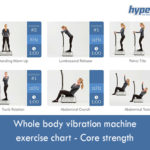
But just as you head out to join the nearest gym, you get a text from a friend who is always working out, saying she threw her back out while getting groceries out of the car and is laid up in bed.
“What gives?” you think. “She works out all the time and got hurt just carrying her groceries.”
You decide that all the trouble of going to the gym obviously isn’t worth the effort if it’s not going to keep you from getting injured doing something you do all the time. Maybe you even convince yourself that your friend wouldn’t have gotten hurt if she wasn’t exerting herself so much at the gym.
So you turn around, change your tennis shoes for some fuzzy socks, and sit back down on the couch. After all, you want to be limber long into your old age, and you don’t want injuries to sideline you.
Don’t reach for the remote just yet.
Chances are, your friend spends most of her time at the gym using weighted or hydraulic machines that train only one muscle group at a time. What your friend needs—and what you need, too—is to focus less on isolated movements like this and more on functional fitness training.
Functional fitness: /fuhngk-shuh-nl fit-nis/ (n.) The ability to do everyday tasks without getting hurt or overly tired.
Says Elizabeth Demeusey, a fitness coach and healthy-lifestyle blogger:
“Functional fitness is important because it makes us stronger and more capable in performing daily activities. For some people, that might mean working in the garden or picking up their toddlers and not experiencing back pain. And when our mindset changes from ‘How does this exercise make me look?’ to ‘What will this exercise help me DO?’ we experience better results from our training.”
So what does functional fitness training look like? Let’s test your knowledge. Which of these exercises train your body for everyday activities?
If you said, “All of them,” you’re right!
These movements all train various large and small muscle groups in tandem, everything working together. And most importantly, your core needs to work hard to stabilize your body and keep you from falling over while you do them.
In contrast, weighted or hydraulic exercise machines–in which you sit down and move the weighted levers using only one joint action, like a leg extension or a bicep curl–use the seat and supports to stabilize you, instead of your core.
While these machines are valuable in helping you get stronger safely, by allowing you to gradually add weight and by guiding you in doing the movement with correct form, you lose out on the functional fitness aspect when you train one muscle group at a time.
And failing to train your core regularly can leave you vulnerable to injuries like a strained neck or back during everyday activities like carrying groceries or reaching for the top shelf of your cabinets.
By using bodyweight exercises and other calisthenics like you probably did in gym class, you are training your body to work together as a whole, increasing your strength and agility, and enabling you to perform everyday tasks without hurting yourself.
Better agility also means you’re more likely to avoid falling, which is particularly important as we age and our bones are more susceptible to fracture.
With regular training that moves your whole body through its entire range of motion, you can protect yourself against falls and injury and never be laid up for long!
Do you work out regularly? Why or why not? Let us know in the comments.

Updated on: 08.09.2021 The lymphatic system is involved not only...

Stress can make you gain weight – we’ve heard this...

Various theories exist to answer this question. As you will...

Our series of whole body vibration machine exercise articles continues...

Both rebounding and jumping on a trampoline are excellent ways...